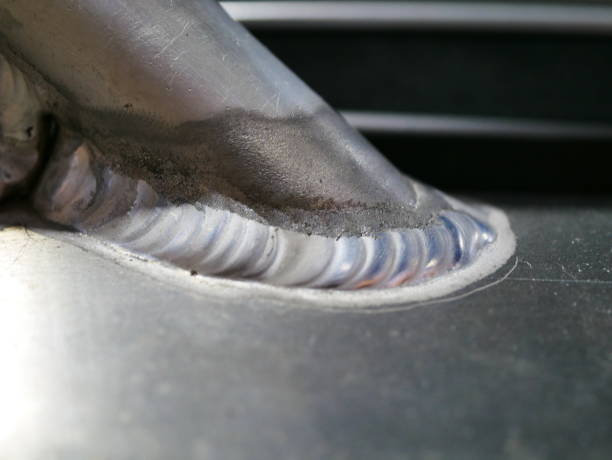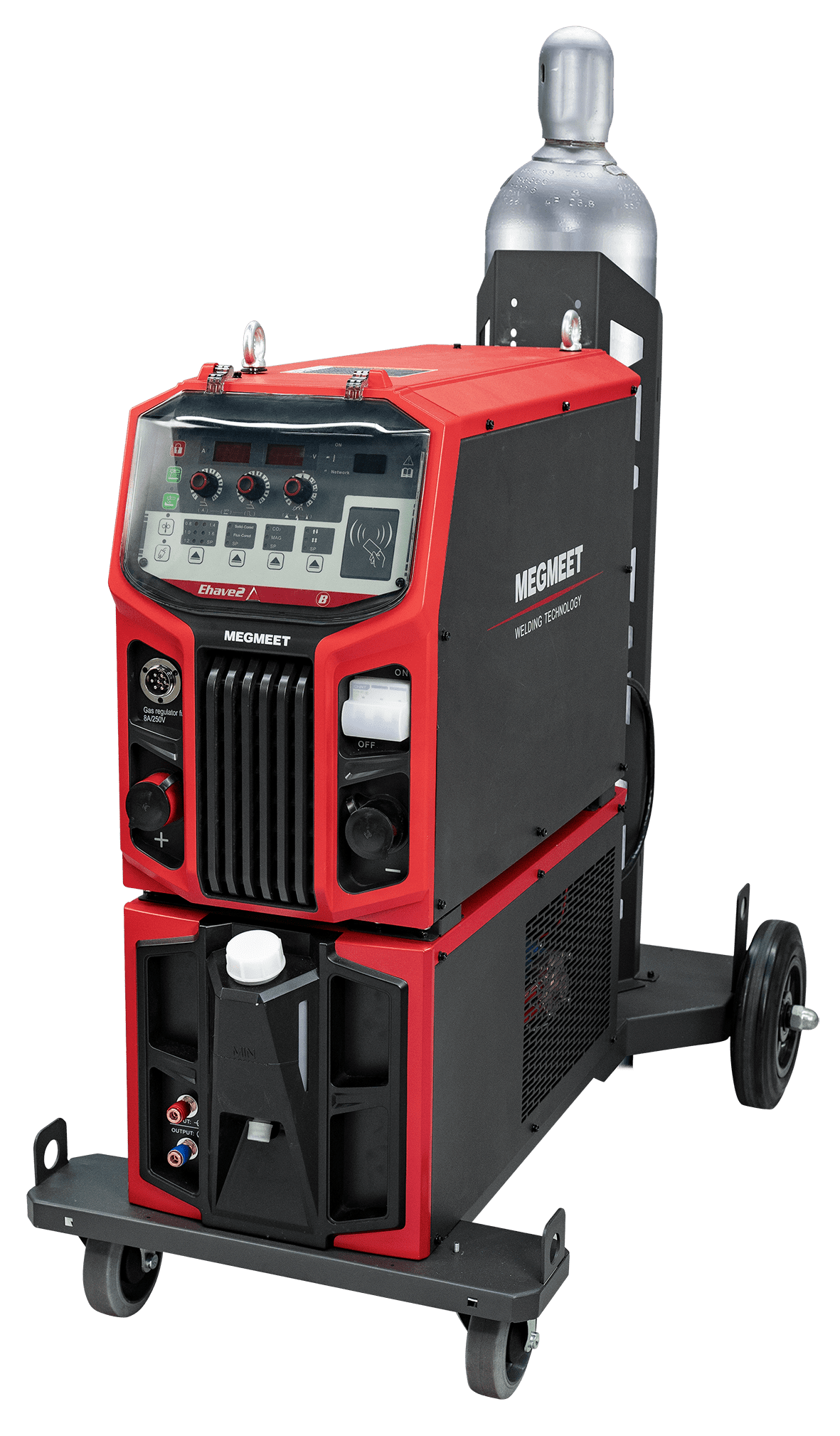Aluminum is a popular metal for various applications, such as aerospace, automotive, construction, and marine. It has many advantages, such as a high strength-to-weight ratio, corrosion resistance, and recyclability. However, welding aluminum can be challenging due to its high thermal conductivity, low melting point, and tendency to form oxide layers. These factors can affect the weld quality and cause problems such as poor penetration, distortion, spatter, porosity, and cracking.

I. Two Main Types of Power Sources for Aluminum Welding
To achieve high-quality aluminum welds, you need to use the right equipment, techniques, and consumables. One of the most important factors in aluminum welding is the power source. The power source determines the arc characteristics and the weld performance. There are two main types of power sources for welding: transformer-based and inverter-based.
Transformer-based power sources are traditional welding machines that use a transformer to convert AC input power into DC output power. They are bulky, heavy, and inefficient. They also have limited control over the welding parameters, such as current, voltage, frequency, and balance. These limitations can result in unstable arcs and poor weld quality.
Inverter-based power sources are modern welding machines that use high-frequency switching technology to convert AC input power into DC output power. They then use pulse-width modulation (PWM) to adjust the output waveform according to the desired welding parameters. This allows for precise control over the arc characteristics and weld quality.
Inverter-based power sources are also more compact, lightweight, and energy-efficient than transformer-based power sources. They can operate on different input voltages and frequencies, making them suitable for various applications and environments. They also have multiple welding modes, such as TIG (tungsten inert gas), MIG (metal inert gas), MMA (manual metal arc), and plasma cutting.
II. Inverter-based Power Sources for Aluminum Welding
One of the best examples of inverter-based power sources is the Ehave2 CM Series from Megmeet. The Ehave2 CM Series is a multi-process welder that can perform TIG, MIG, and MMA on various metals, including aluminum. It has a digital control panel that allows you to adjust the welding parameters easily and accurately. It also has a synergic function that automatically matches the wire feed speed to the welding current.

The Ehave2 CM Series has a unique feature called an inverter pulse that enhances the performance of aluminum welding. Inverter pulse is a special mode that uses high-frequency pulses to modulate the welding current. This creates a narrow and concentrated arc that penetrates deeply into the base metal. It also reduces the heat input and minimizes the distortion and spatter.
III. How to Weld Aluminum with the Ehave2 CM Series
To weld aluminum with the Ehave2 CM Series, you need to follow some basic steps:
1. Clean the aluminum surface with a stainless steel brush or a solvent to remove any dirt, oil, or oxide layer.
2. Set up the power source according to the welding mode, material thickness, and joint type.
3. Connect the ground clamp to the workpiece and the torch to the power source.
4. Turn on the gas supply and set the gas flow rate to 10-15 L/min. Use pure argon as the shielding gas for both TIG and MIG welding.
5. Hold the torch at a 10-15 degree angle from the workpiece and initiate the arc by pressing the trigger or touching the tungsten electrode to the metal.
6. Move the torch along the joint at a steady speed and maintain a consistent arc length and travel angle.
7. Add filler metal as needed by dipping the rod into the weld pool or feeding the wire through the torch.
8. Terminate the arc by releasing the trigger or lifting the tungsten electrode from the metal.
9. Allow the weld to cool down naturally and inspect it for any defects.
By following these steps, you can achieve high-quality aluminum welds with inverter-based power supplies like the Ehave2 CM Series from Megmeet. If you want to learn more about inverter-based power supplies and their benefits for aluminum welding, you can visit Megmeet’s website or read these articles:
1. What is an Inverter Welder and How it Works
2. Weld Inverter: Aluminum welds with inverter-based power supplies
I hope this article helps you with your aluminum welding project.
FAQs about how to weld aluminum with inverter-based power supplies:
Q1. Why are inverter-based power supplies preferred for aluminum welding?
Inverter-based power sources offer superior control over welding parameters such as arc stability, frequency, and waveform balance. This precision allows for better heat management, reduced distortion, and cleaner welds—especially important when working with aluminum, which conducts heat rapidly.
Q2. Which welding process works best for aluminum using an inverter machine?
Q3. What settings are important when welding aluminum with an inverter welder?
Key inverter settings include AC balance control, frequency adjustment, and pulse parameters. Increasing AC frequency improves arc focus, while proper balance removes oxide efficiently without overheating. Pulse controls help reduce heat input and prevent burn-through.
Q4. Do I need special electrodes or filler wires for inverter-based aluminum welding?
Yes. Always use aluminum-specific filler metals, such as ER4043 or ER5356, depending on the alloy being welded. Clean the base metal thoroughly to remove oxide and contaminants before welding to ensure sound fusion and appearance.
Q5. How can I prevent overheating and distortion when welding aluminum with an inverter?
Use shorter arc lengths, high travel speeds, and pulse current modes to limit heat buildup. Preheating thicker sections (around 150–200°F / 65–90°C) can also improve weld penetration while minimizing thermal distortion.





